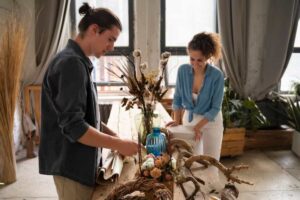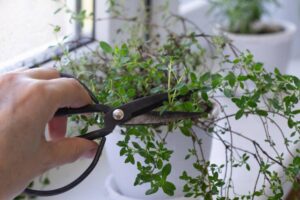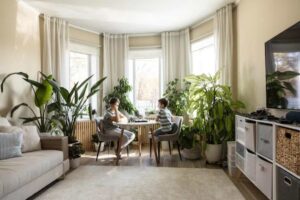The Interior Blog
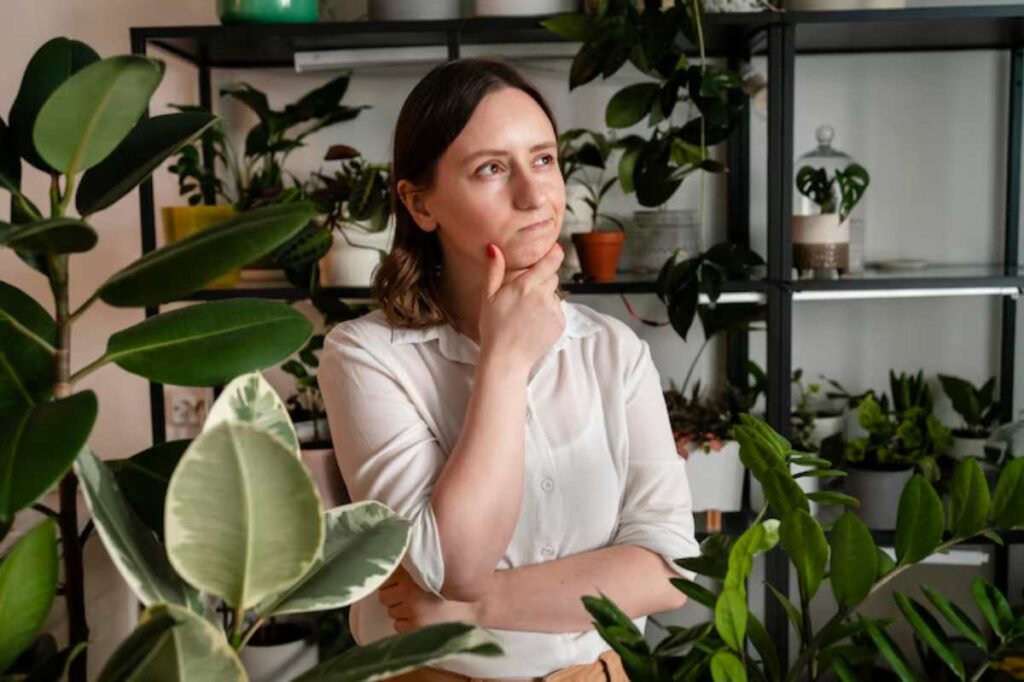
How to Avoid Common Styling Mistakes with Indoor Plants
You’ve seen the pictures: leafy corners that look straight out of a magazine. In real life, though, your plant setup feels… off. Maybe your peace lily looks awkward in the hallway. Or your snake plant keeps toppling over. It’s not the plant — it’s the styling.
Indoor greenery is a powerful décor tool. It can soften hard edges, add natural texture, and breathe life into any space. But even the most beautiful plants can lose their charm if styled poorly. That’s where many beginners — and even seasoned plant lovers — trip up.
The good news? These plant décor mistakes are easy to avoid with a few thoughtful choices. This guide will walk you through the most common errors and show you how to style your plants for maximum visual harmony and minimal fuss.
Whether you’re new to indoor gardening or refining your green collection, you’ll leave with confidence, clarity, and styling savvy.
Why styling matters as much as plant choice
Before we jump into mistakes, it’s worth understanding why styling plants isn’t just about aesthetics — it’s about function and flow.
A well-styled plant:
- Looks balanced in its environment
- Supports the plant’s health with appropriate light and space
- Complements the surrounding furniture, textures, and tones
- Enhances mood and helps define different zones within a room
When done right, a styled plant doesn’t just sit there — it belongs there.
Mistake #1: Using the wrong pot size or shape
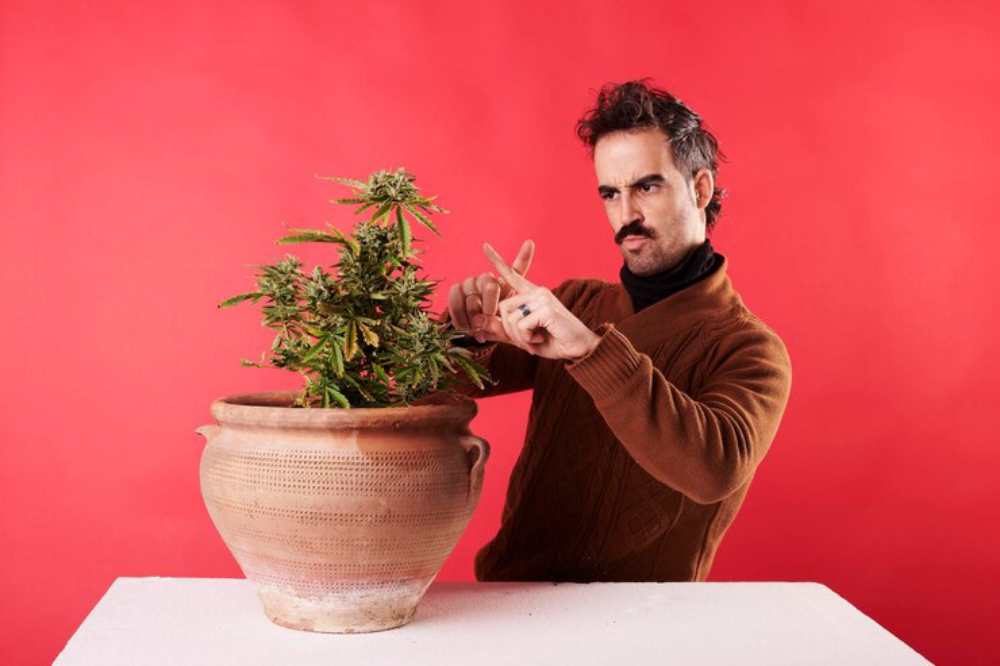
What goes wrong?
A plant in a too-small pot becomes root-bound and unstable. One in an oversized container often looks awkward and can suffer from root rot. But beyond plant health, the visual scale can feel mismatched.
How to fix it:
- Choose pots 2–5cm wider than the plant’s nursery pot
- Match pot shape to the plant type — tall, narrow for snake plants; shallow bowls for succulents
- Keep it proportional to nearby furniture — a huge pot next to a delicate table feels overpowering
Need help finding the perfect container? Explore this pot size guide for aesthetic styling.
Mistake #2: Ignoring light requirements for the sake of décor
What goes wrong?
We’ve all done it — placed a sun-loving plant in a dark bathroom because it looked nice. But without proper light, your plant will fade, stretch, or die — no matter how pretty the setup.
How to fix it:
- Match the plant to the room, not the other way around
- For low-light areas, opt for ZZ plants, snake plants, or cast iron plants
- Place light-loving plants like monstera or fiddle leaf figs near bright windows
- Use mirrors to reflect light or rotate plants weekly if styling options are limited
Remember, styling isn’t just about looks — it’s about longevity.
Mistake #3: Cluttering too many plants in one spot
What goes wrong?
It’s tempting to group every plant in that “plant corner” or shelf. But too many plants in one place can feel chaotic rather than calming.
How to fix it:
- Group in odd numbers (3 or 5), not all at once
- Mix heights and textures for variety
- Leave negative space between pots to let them breathe visually
- Use furniture, risers, or plant stands for small spaces to create vertical separation
Think of plants like artwork — sometimes less is more.
Mistake #4: Styling without considering plant growth
What goes wrong?
A plant may look lovely now, but in six months, its size or shape could overwhelm its space. Some plants grow upwards, others outwards, and some trail all over the place.
How to fix it:
- Research how big the plant gets over time
- Allow buffer space around pots for natural expansion
- Choose trailing plants like pothos or spider plants for shelves or hanging planters
- Use a stake or trellis to train vining plants if space is limited
A little planning saves a lot of rearranging later.
Mistake #5: Mixing too many styles or colours
What goes wrong?
Eclectic can work. But if you’re using bright red pots, vintage ceramics, and ultra-modern stands all in one room, it can feel disjointed and distracting.
How to fix it:
- Pick a cohesive palette — neutral tones like white, beige, terracotta, or black are timeless
- Limit decorative accents — let the plant be the hero
- Choose planters that reflect your room’s overall style (Scandi, industrial, boho, etc.)
- Mix materials thoughtfully — for example, pair matte pots with metallic stands for contrast
A unified look feels intentional, not accidental.
Mistake #6: Forgetting to use height and layers
What goes wrong?
Placing all plants on the floor or at one level flattens the room visually. Without variation in height, even a beautiful plant collection can feel monotonous.
How to fix it:
- Use plant stands, side tables, or wall shelves
- Hang planters from the ceiling or walls to lift the eye
- Layer plants by height — tall at the back, medium at the centre, trailing in front
- Use stackable risers or books for gentle elevation
This creates flow and movement, drawing the eye naturally around the space.
Mistake #7: Styling without drainage or proper liners
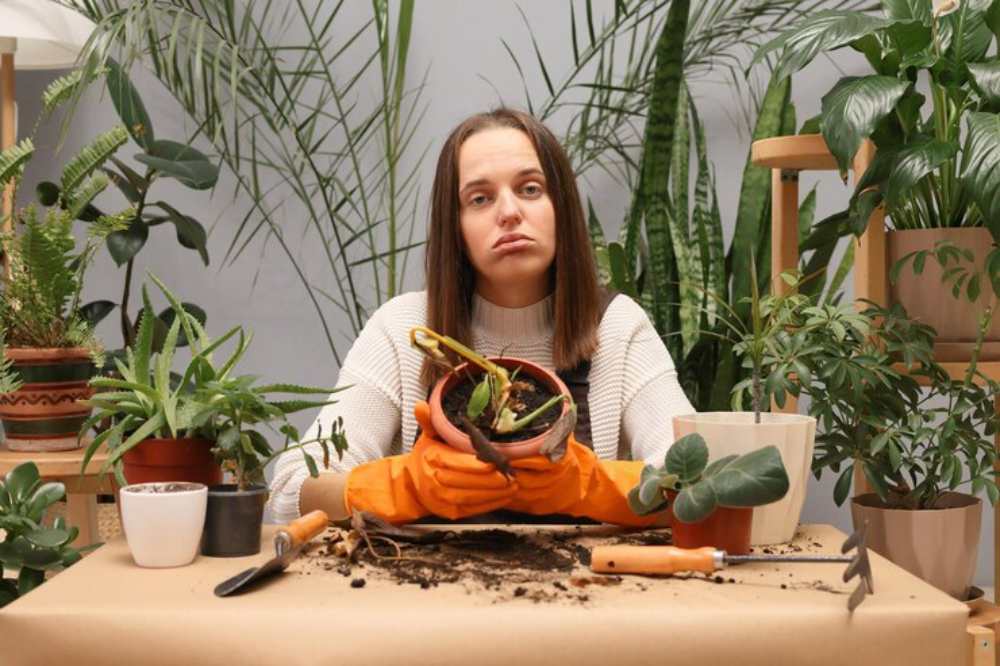
What goes wrong?
You fall in love with a gorgeous pot… with no drainage hole. You plant directly in it, water generously, and wonder why your leaves are yellowing or wilting. Hello, root rot.
How to fix it:
- Use a plastic nursery pot with holes inside your decorative planter
- Place a layer of pebbles at the bottom if repotting directly
- Always remove excess water from saucers
- Don’t skip drainage just for style — it’s a recipe for unhappy roots
A stylish setup is only beautiful if your plant is healthy too.
Mistake #8: Overcrowding shelves or surfaces
What goes wrong?
That bookshelf filled edge to edge with plants might look lush on Instagram, but in real life, it can limit light, airflow, and create visual clutter.
How to fix it:
- Leave space between planters for airflow and definition
- Use staggered heights and trailing types to break up blocky shapes
- Pair plants with books, candles, or decorative objects for balance
- Let each plant “breathe” — even visually
Shelves should be styled, not stuffed.
Mistake #9: Keeping unhealthy plants as decor
What goes wrong?
You might feel attached, but a struggling, yellowed, or leggy plant doesn’t enhance your space — it drains it. And it could spread pests or disease to your healthy ones.
How to fix it:
- Prune regularly — remove dead leaves and stems
- If a plant is beyond saving, replace it with a healthier option
- Don’t be afraid to start fresh — every plant teaches you something
Your room deserves vitality, not struggle.
Mistake #10: Forgetting the power of repetition
What goes wrong?
When every plant, pot, and colour is different, your setup can look chaotic. Repetition creates rhythm — a fundamental design principle.
How to fix it:
- Use matching pots in different sizes
- Repeat the same plant variety in different corners
- Echo similar tones or shapes throughout a room
- Use symmetry in shelves or window sills for harmony
Your space will feel calmer and more connected.
Conclusion: Style your greenery with confidence and care
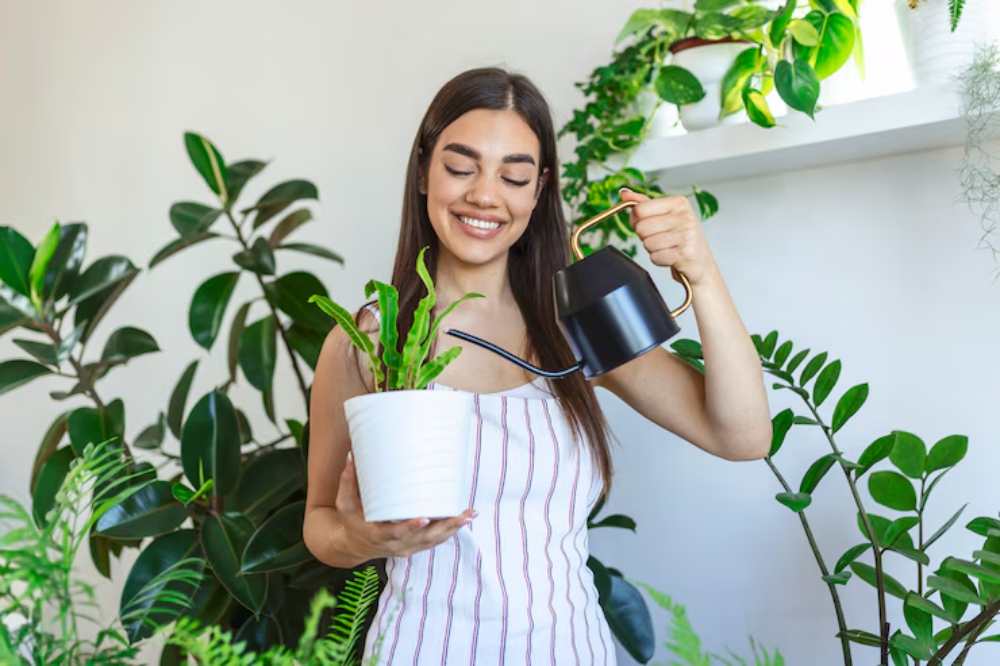
Decorating with houseplants isn’t about rigid rules — it’s about creating flow, comfort, and personality. But as you’ve seen, small styling mistakes can make a big difference.
By understanding common pitfalls and how to avoid them, you can make smarter choices from the start. Whether it’s choosing the right pot, placing plants where they thrive, or balancing colour and height, thoughtful styling makes your greenery feel like it truly belongs.
Ready to transform your space with confidence? Revisit your plant corners. Move a pot. Swap a stand. Let your greenery breathe, grow, and shine — in both form and function.
And if you’ve made any of these mistakes before, you’re not alone. That’s how all great plant stylists get started.



